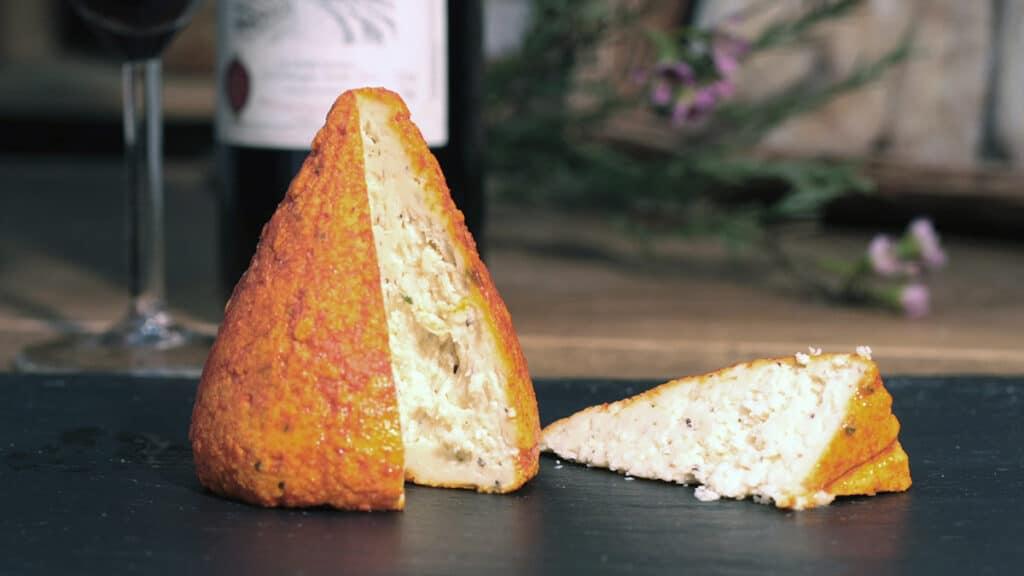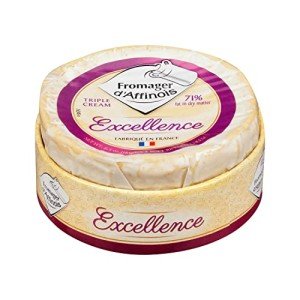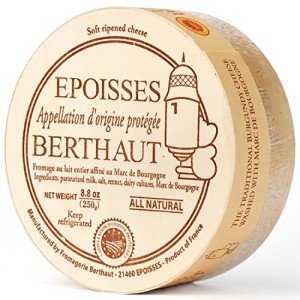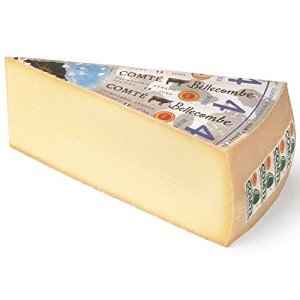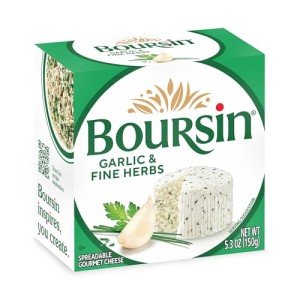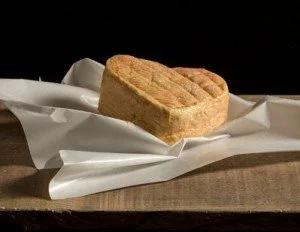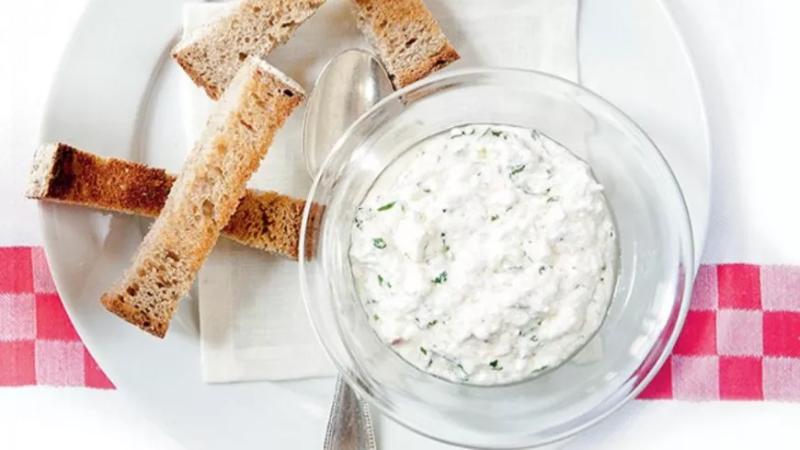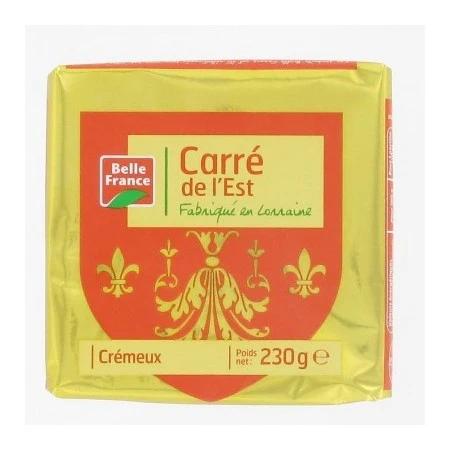Key Takeaways
- Boulette d’Avesnes is a spicy, cone-shaped artisan cheese from Northern France with a rich history dating back to the 15th century.
- Its distinctive red paprika or annatto rind and herb-infused interior offer an intense aroma and flavor profile unlike most French cheeses.
- The cheese is often beer-washed during aging, enhancing its smoky, pungent character and providing probiotics.
- Boulette d’Avesnes integrates tradition with modern culinary trends, appearing in fusion dishes and gaining global acclaim.
- Proper pairing, storage, and serving techniques elevate its boldness while balancing nutrition and flavor.
Table of Contents
- The Rich Heritage of Boulette d’Avesnes
- Boulette d’Avesnes in Modern French Cheese Culture
- Boulette d’Avesnes at Regional Events
- Traditional Events Celebrating Boulette d’Avesnes
- Flavor, Texture, and Aroma: The Distinctive Traits of Boulette d’Avesnes
- The Artisanal Craft Behind Boulette d’Avesnes
- Nutritional Value and Health Benefits of This Northern France Cheese
- Serving Suggestions: Pairing and Cooking with Boulette d’Avesnes
- What Chefs Say About Boulette d’Avesnes
- Finding Authentic Boulette d’Avesnes: Availability and Importers
- How to Store and Preserve Boulette d’Avesnes Properly
- Essential Tips for Enjoying Boulette d’Avesnes
- Why Boulette d’Avesnes Deserves a Spot on Your Cheese Board
- Conclusion: A Spicy Gem in France’s Cheese Crown
- Frequently Asked Questions About French Cheese
- Explore More: Authority Resources on French Cheese
Boulette d’Avesnes: The Spicy Red Cone of the North
Picture a cheese so bold it’s nicknamed "the devil’s suppository"! Meet Boulette d’Avesnes, a fiery Northern French cheese that’s impossible to ignore. Born in the frosty Nord-Pas-de-Calais region near Belgium, this cone-shaped marvel packs a punch with its paprika-dusted crust and tangy, herb-infused heart. Unlike timid cheeses, it announces itself with a pungent aroma and a spicy kick that lingers like a thrilling secret. Crafted since the 1400s, it’s a testament to French ingenuity—turning leftover dairy into edible art. Ready for an adventure? Let’s explore why this cheese deserves your attention! 🧀🔥
The Rich Heritage of Boulette d’Avesnes
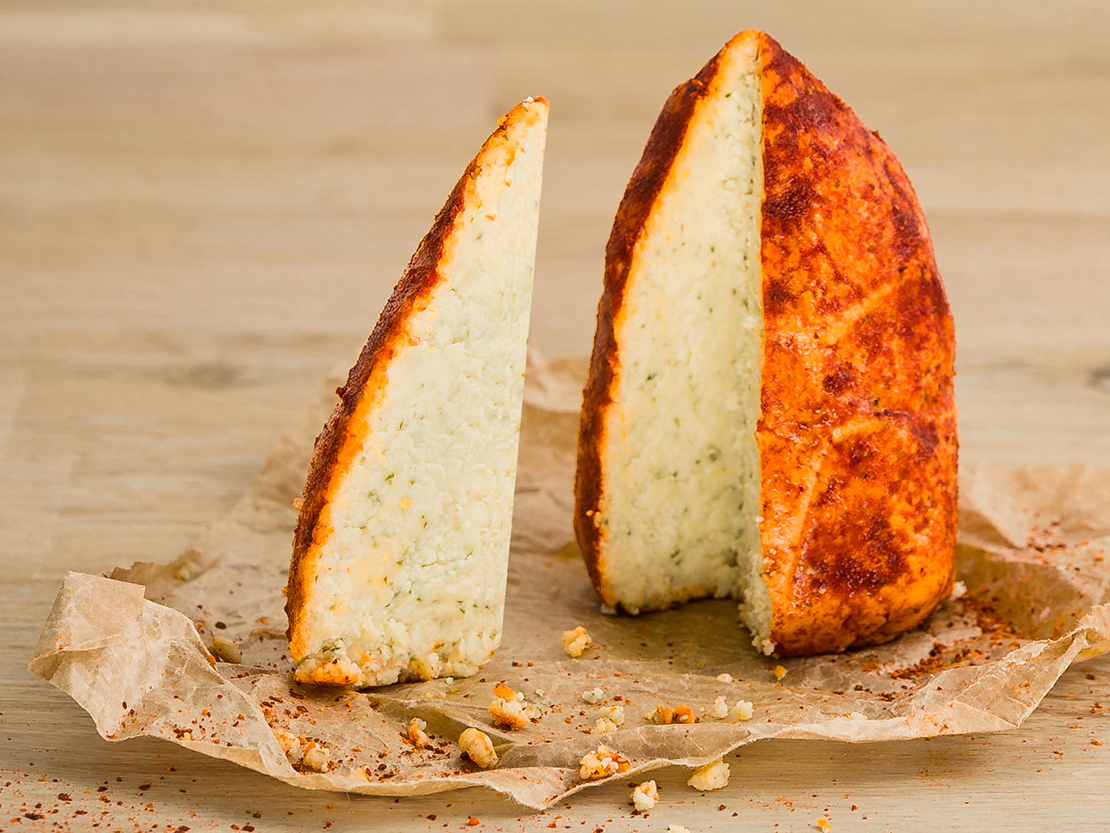 Origins and Historical Significance
Origins and Historical Significance
Boulette d’Avesnes dates back to the 15th century, originating in the quaint town of Avesnes-sur-Helpe. Local abbey records from 1760 document its artisanal craftsmanship, highlighting the tradition’s longevity (Gourmetpedia). Farmers exhibited incredible frugality—turning leftover buttermilk or Maroilles scraps into this spicy cone, reflecting a zero-waste mentality well ahead of its time (CheeseOrigin).
The shape is more than quirky: hand-rolled into cones or ‘little balls’ (*boulettes*), it symbolized community and resourcefulness, becoming a winter bartering tool for supplies (Cheese.com). This sustainable origin story enhances its allure, especially when juxtaposed with creamier, more delicate cheeses of France.
Cultural Roots and Regional Pride
The Nord-Pas-de-Calais region cherishes Boulette d’Avesnes as part of its cultural fabric. Its production methods reflect a harmony between land, climate, and community traditions. The cheese’s spicy character mirrors the boldness of the local palate and historical resilience, making it a proud symbol of Northern France.
Through centuries, this cheese has remained relatively unchanged, standing as a delicious bridge from the Middle Ages to the modern culinary landscape. It’s a testament to French ingenuity, craftsmanship, and respect for terroir.
Boulette d’Avesnes in Modern French Cheese Culture
Evolving Culinary Landscape
France's passion for cheese is unparalleled, with average consumption at 12.5 kilos per person annually. In today’s diverse culinary scene, Boulette d’Avesnes has found a fresh audience—not just locals, but international gourmands eager for bold flavors. Its fiery personality breaks the mold of traditional soft or blue cheeses, inviting new pairings and creative dishes.
Contemporary chefs incorporate Boulette into fusion tapas, gourmet burgers, and artisanal sandwiches, demonstrating how age-old recipes evolve with modern tastes. The cheese’s intense aroma and spiciness lure food lovers seeking a visceral experience beyond familiar mild cheeses. For more on pairing with wines, check out Top Red Wines for Charcuterie.
Global Recognition and Market Presence
Boulette d’Avesnes now shines on international stages—from Tokyo’s epicurean markets to New York’s cheese counters—spotlighting the distinctive terroir of Hauts-de-France (Euronews). With artisanal cheese movements on the rise, Boulette exemplifies how traditional products can thrive amidst gastronomic globalization.
This growing presence proves the cheese’s adaptability and timeless appeal, reinforcing France’s reputation as the ultimate cheese innovator. Boulette’s intensity and rich heritage create a narrative that excites chefs, bloggers, and consumers worldwide.
Boulette d’Avesnes at Regional Events
Celebrations and Markets in Northern France
Regional gatherings such as Lille’s Marché aux Fromages provide prime opportunities to sample Boulette alongside other local classics like Maroilles and Vieux Lille. Visitors relish its smoky, paprika-kissed rind and herb-laced core, often paired with Belgian ales that complement the cheese’s spicy notes (Epicerie Corner).
These lively markets celebrate local dairy traditions and sustainable practices, promoting cheeses made with utmost respect for the region’s resources. Boulette’s vibrant cones are a must-try for curious foodies exploring Northern France’s rich gastronomic landscape.
Workshops and Cooking Demonstrations
Beyond tastings, Boulette stars in hands-on experiences such as beer-washed aging workshops and cooking classes at fairs in Cambrai and Arras. Participants learn about its distinctive pungency and unique conical formation while getting tips to recreate recipes at home. For more ideas on hosting your own cheese-centric gatherings, see Charcuterie Party Essentials.
These events highlight Boulette’s connection to terroir—the chalky soils and humid climate influencing its flavor. The sensory appeal—visual, aromatic, and gustatory—makes it a superstar of Northern French dairy heritage.
Traditional Events Celebrating Boulette d’Avesnes
Fête de la Boulette: The Spicy Annual Carnival
Each autumn, Avesnes-sur-Helpe bursts into life with the Fête de la Boulette, a vibrant celebration of this iconic cheese. Parades, medieval reenactments, and fiery tastings create a carnival atmosphere that honours tradition and community spirit.
The event is both a cultural showcase and a tasting festival, drawing locals and tourists eager to experience the authentic “devil’s suppository” in its birthplace. Family-friendly activities nurture appreciation for artisanal cheese making across generations.
Regional Festivals and Artisan Demonstrations
Lille’s Marché aux Fromages features artisan demonstrations of Boulette-making techniques, preserving centuries-old hand-rolling skills. Experts share secrets, emphasizing the patience and precision needed to craft quality cones.
Nearby festivals such as Cambrai’s Festival des Saveurs focus on Boulette-driven recipes, including unique beer-braised stews. These festivities underline Boulette’s link to northern French culinary identity and its ongoing relevance.
Flavor, Texture, and Aroma: The Distinctive Traits of Boulette d’Avesnes
Sensory Profile: What to Expect
Boulette d’Avesnes commands attention with its vivid red cone, glowing thanks to layers of paprika or annatto on the rind (CheeseOrigin). Inside, a creamy yet slightly grainy texture awaits, softened in fresh cheeses and crumbly when aged.
The aroma is layered and intense—herbs like parsley, tarragon, and cloves mingle with smoky paprika and a musky funk that makes its presence felt. The flavor profile readers encounter is a fiery, tangy, herbal fireworks display that lingers and delights.
Unique Shape and Flavor Concentration
The cone shape isn’t merely aesthetic—it enhances the cheese’s punch by concentrating flavors. Legend has it 18th-century farmers modeled it after church bells, a cheeky nod to monks who originally perfected the recipe.
During WWI, it was carried as a “courage cone” by soldiers believing its spice uplifted morale in trenches. This heritage adds to the cheese’s mystique and the emotional connection it inspires in eaters. For more on aging techniques, explore French Cheese Aging Secrets.
| Cheese | Spiciness | Aroma Intensity | Texture |
|---|---|---|---|
| Boulette d’Avesnes | High | Intense (smoky/herbal) | Creamy to crumbly |
| Maroilles | Low | Very Strong (pungent) | Soft, sticky |
| Brie | None | Mild (earthy) | Buttery, runny |
Boulette d’Avesnes dominates the spice spectrum compared to French classics like Brie or Maroilles. Its aroma—a bold fusion of paprika, cloves, and fermented earth—creates a memorable olfactory experience. These complex notes arise from specialized beer-washing and aging techniques that amplify rustic character.
The textural journey from creamy to crumbly offers versatility across dishes, contrasting with Maroilles’ uniformly soft profile. Boulette’s iconic cone also intensifies flavors, making every bite an adventure through Northern France’s terroir.
The Artisanal Craft Behind Boulette d’Avesnes
Ingredients and Preparation
Skilled artisans start with pasteurized cow's milk containing approximately 45% fat, blended carefully with a mélange of herbs: fresh parsley, pepper, tarragon, and cloves (Cheese.com). The mixture ferments, developing its signature tang and aromas before the hand-rolling process.
Each cheese is meticulously shaped into cones by hand—no industrial machines here—preserving the artisanal charm and textural integrity. This traditional technique further connects the cheese to its regional origins and methods passed down through generations.
Aging and Finishing Touches
Fresh Boulette d’Avesnes is enjoyed within 30 days, presenting a mild, spreadable texture. For those craving intensified flavor, aging for 6 to 12 weeks deepens complexity.
During this period, cheeses receive regular beer washings that introduce malty notes and enhance the robust aroma (CheeseOrigin). Finally, a generous dusting of paprika or annatto imparts the fiery red surface that is Boulette’s signature look.
Explore the depths of French cheese craftsmanship with French Cheese Aging Secrets to see how terroir and tradition shape every bite.
Nutritional Value and Health Benefits of This Northern France Cheese
Health Perks of Boulette d’Avesnes
Beyond its bold flavor, Boulette d’Avesnes is a nutritional powerhouse. It boasts 18 grams of protein per 100 grams, supporting muscle health and repair, while 480 mg of calcium strengthens bones (Cheese.com).
Fermented, aged varieties contribute probiotics, promoting gut health and digestion. However, due to its 45% fat content and significant sodium levels, moderation is important, especially for diets sensitive to salt or fat. Pairing with fiber-rich foods like apples or whole grain crackers helps balance richness. For more on preserving cheese, see French Cheese Preservation Techniques.
Nutritional Facts Table
| Nutrient (per 100g) | Amount | Daily Value (%) |
|---|---|---|
| Calories | 320 kcal | 16% |
| Protein | 18g | 36% |
| Fat | 25g | 38% |
| Calcium | 480mg | 48% |
| Sodium | 800mg | 35% |
Its relatively high sodium content means it’s best enjoyed by those without hypertension or during electrolyte-replacing activities like sports. Aging introduces beneficial microbes that can mimic the probiotic benefits of yogurt, offering additional digestive and immune support for many.
The fermentation process also breaks down some lactose, helping individuals with mild lactose intolerance savor its unique flavors. This nutritional balance makes Boulette d’Avesnes a worthy indulgence in a balanced diet (Cheese.com).
Serving Suggestions: Pairing and Cooking with Boulette d’Avesnes
Perfect Pairings for Bold Flavors
To balance Boulette’s fiery character on your cheese board, opt for sweet companions like fresh figs or honey. These natural sugars soften the heat, creating a harmonious tasting experience. Robust wines — especially full-bodied reds like Syrah — or Belgian ales stand up admirably to the cheese’s intensity (CheeseOrigin).
Prefer white wines? A crisp Sauvignon Blanc or light reds provide refreshing acidity to cut through richness. Crunchy baguettes or sourdough breads absorb and showcase bold flavor layers. Add charcuterie like prosciutto or salami for a savory counterpoint, or try fresh apples and pears to lend natural sweetness and texture.
Cooking Ideas and Fun Facts
Boulette shines in recipes too! Blend it into a spicy dip with cream cheese and chives or layer melted slices inside grilled rye sandwiches with caramelized onions. Elevate béchamel sauces by whisking in grated Boulette, perfect for pasta or casseroles.
Chef Pierre from Lille calls it “the rockstar of Northern French cuisine” when used in traditional tartiflette. Historically, avant-garde Parisian artists paired Boulette with dark chocolate at 1920s soirées, inventing a cult “spice-and-sweet” flavor combo still adored today. For more ideas on hosting cheese-centric gatherings, see Charcuterie Party Essentials.
- Wine: Chilled Sauvignon Blanc or Syrah for contrast. More on Top Red Wines for Charcuterie.
- Bread: Crisp baguettes or artisan sourdough.
- Charcuterie: Salty prosciutto or salami. Learn about Top Dry Cured Meats.
- Fruits: Apples and pears for sweetness.
What Chefs Say About Boulette d’Avesnes
Celebrity Chef Endorsements
Top chefs appreciate Boulette d’Avesnes for its dramatic presence and flavor depth. Michelin-starred Élise Dubois praises it as “a flavor bomb” in beer-braised pork stew, where its umami amplifies sauces and melts exquisitely. Parisian bistros often use it to upgrade traditional croque-monsieur with a smoky, spicy twist.
Jacques Renault, a seasoned French dairy product expert, remarks: “It’s not for the faint-hearted—but that’s why food lovers crave it.” Indeed, Boulette’s rebellious boldness sets it apart from subtle soft cheeses.
Pairing and Flavor Insights
Award-winning fromager Marie-Claire Duval calls Boulette “the punk rock of French cheese—unapologetic, loud, and impossible to ignore." Its herbal rebellion—anchored by cloves and tarragon with a fireball of paprika—is a conversation starter on any cheese board.
Beverage director Sophie Martin recommends pairing Boulette with gin or hoppy IPAs to complement its spice. The botanicals in gin echo the cheese’s herbaceous notes, and IPA bitterness gracefully cuts through fat, creating a well-choreographed tango of flavors.
“Boulette d’Avesnes is the punk rock of French cheese—unapologetic, loud, and impossible to ignore. One bite electrifies the palate with a smoky, herbal rebellion.”
– Marie-Claire Duval, Award-Winning Fromager (Lyon)
“Aged in beer and dusted with fire, it’s the ultimate alchemy of Northern France’s terroir and ingenuity.”
– Antoine Lefèvre, Master Cheesemaker (Normandy)
“Pair it with gin or a hoppy IPA; the botanicals dance with its spices like a well-choreographed tango.”
– Sophie Martin, Beverage Director, Le Cellier (Brussels)
Finding Authentic Boulette d’Avesnes: Availability and Importers
Where to Buy in France
Locating genuine Boulette d’Avesnes requires visiting specialty fromageries in Lille, Avesnes-sur-Helpe, and broader Hauts-de-France (Epicerie Corner). Authentic cheeses stand out for their hand-shaped cones, slightly stained paprika rinds, and seasonal winter availability.
Small-scale producers emphasize terroir and traditional methods, so direct purchases at regional markets ensure freshness and provenance.
International Online Retailers
For those abroad, online marketplaces such as Cheese.com and Mons Cheesemongers offer reliable access. Buyers should verify production dates and storage to receive optimal quality.
Planning ahead is key, since Boulette’s seasonality limits availability. For tips on ensuring authenticity, see Buy Authentic French Charcuterie Online.
How to Store and Preserve Boulette d’Avesnes Properly
Best Storage Practices
To maintain freshness, wrap Boulette d’Avesnes in wax paper and place it in the refrigerator’s crisper drawer, ideally at 4°C (39°F). Avoid plastic wrap which can suffocate the cheese, encouraging unwanted mold growth.
Consume within two weeks of opening or purchase for peak flavor. If blue mold develops, it’s best to discard. Before serving, allow cheese to reach room temperature for enhanced aromas and texture.
Preservation Techniques for Longevity
Mastering preservation elevates later enjoyment. Use breathable containers or cheese paper, which balance moisture and airflow. Rotate cheese surfaces gently to prevent excessive drying or crust hardening.
Learning these skills can extend shelf life without compromising quality. For deeper insights, explore French Cheese Preservation Techniques.
Essential Tips for Enjoying Boulette d’Avesnes
Do’s
- Pair with dark beer or gin to highlight spicy notes.
- Serve at 18–20°C (64–68°F) for optimal texture and aroma.
- Try young Boulette first to ease into its boldness.
- Spread on crusty bread with a drizzle of honey or fresh herbs.
- Add pickles or olives for a tangy contrast.
Don’ts and Pro Moves
- Avoid overwhelming it with other strong-flavored cheeses on the same board.
- Never microwave Boulette—it melts unevenly and loses character.
Pro Move: Host a traditional Northern French “apéro” with small Boulette cones served alongside cornichons, charcuterie, and Belgian ale. Legend says 19th-century miners ate it this way to “wake up tired taste buds” after long shifts.
For hosting inspiration, see Charcuterie Party Essentials.
Why Boulette d’Avesnes Deserves a Spot on Your Cheese Board
Historical Valor and Boldness Combined
From its humble medieval beginnings as a thrifty farmer’s creation, Boulette d’Avesnes has reached legendary status. Its spicy, sustainable roots captivate cheese lovers who value rich stories as much as flavor.
Whether spread thick on crusty bread, melted into sauces, or enjoyed neat, this spice-kissed cone transports you on a culinary adventure through Northern France’s dairy heritage.
A Culinary Icon Worth Exploring
While France offers over 1,000 cheese varieties, Boulette d’Avesnes stands out for its boldness and terroir-driven identity. Its fiery, herbaceous character pairs beautifully with modern palates and classic combinations alike.
Including it on your cheese board adds drama, history, and unmissable flavor, elevating any social occasion or meal.
Discover More French Cheese Adventures
Ready to dive deeper into France’s incredible cheese tapestry? Explore our handpicked French Cheese Collection for more artisanal gems waiting to delight your palate.
Your taste buds—and your cheese board—will thank you!
4.95 out of 5 starsImported French Triple Cream Brie, 6.5 oz
Indulge in the rich, buttery flavor of this luxurious cheese that's perfect for your next cheese board or a special treat
Product information
Product Review Score
Product links
| Statistic | Value | Insight |
|---|---|---|
| Annual French Cheese Consumption | 12.5 kg per person | Highest globally |
| Boulette d’Avesnes Aging Period | 1-3 months | Beer-washed for intensity |
| French Cheese Varieties | 1,000+ | 46 AOC-protected |
| Boulette Fat Content | 45% | Rich, indulgent texture |
Conclusion: A Spicy Gem in France’s Cheese Crown
Boulette d’Avesnes isn’t just another French cheese; it’s a flavor-packed journey steeped in history, culture, and culinary artistry. From the frugal creativity of 15th-century farmers to the battlefield morale-boosting rations in WWI, each bite resonates with stories of resilience and passion.
Its spicy paprika crust, herb-infused creamy heart, and unforgettable aroma make it a standout among France’s iconic cheese varieties. Whether enjoyed fresh or aged, it epitomizes the marriage of boldness and tradition.
France’s cheese landscape is vast and varied, but few artisanal cheeses bring the sustainable, spicy, and historical charm that Boulette d’Avesnes delivers. Exploring this cone-shaped marvel invites a delicious dive into Northern France’s terroir and gastronomy.
Ready to taste the spice and soul of this legendary cheese? Discover more treasures within the French Cheese Collection and let your palate embark on new adventures!
Frequently Asked Questions About French Cheese
- What makes French cheese unique?
- How many types of French cheese exist?
- Are there other spicy French cheeses?
- What’s the best way to store French cheese?
- Can I pair French cheese with non-alcoholic drinks?
- Why is French cheese so expensive?
- What’s a beginner-friendly French cheese?
What makes French cheese unique?
French cheeses are deeply connected to their terroir — the local soil, climate, and historical craftsmanship that shape each variety. Protected by stringent AOC regulations, these cheeses preserve centuries-old traditional methods. This ensures you savor authentic flavors and qualities unavailable elsewhere. For example, Boulette d’Avesnes’ distinctive beer-wash technique is unique to Northern France (Cheese.com).
How many types of French cheese exist?
France boasts over 1,000 cheese varieties spanning textures, flavors, and milk types. Among these, 46 types carry AOC protection, highlighting regional specificity and traditional methods. From Normandie’s creamy Camembert to Alsace’s pungent Munster, each region crafts its own signature taste experience.
Are there other spicy French cheeses?
Spicy French cheeses are rare, with most focusing on herbs, molds, or creamy profiles. Besides Boulette d’Avesnes, notable exceptions include Poivre d’Âne — a goat cheese rolled in peppery herbs — and some chèvres with cracked pepper coatings, adding heat and complexity.
What’s the best way to store French cheese?
For optimal freshness, wrap cheese in wax paper (never plastic) and refrigerate at about 4°C (39°F). Allow soft cheeses like Brie to come to room temperature an hour before serving for flavor release. Harder varieties keep longer but should still be monitored to prevent drying.
Can I pair French cheese with non-alcoholic drinks?
Absolutely! Earthy Comté pairs beautifully with apple cider, while tangy chèvre resonates with honey-infused teas. Boulette d’Avesnes works surprisingly well with spicy ginger beer, its acidity cutting through rich textures.
Why is French cheese so expensive?
The artisanal nature of French cheese production, strict AOC regulations, and small-batch aging contribute to cost. Cheeses like Boulette d’Avesnes require hand-rolling and weeks of careful maturation, making them premium products worth the investment.
What’s a beginner-friendly French cheese?
Those new to French cheeses should start with milder, creamy choices such as Brie, Camembert, or Comté. Gradually explore stronger aromas and flavors with options like Époisses or, for the adventurous, Boulette d’Avesnes. Pair with fruit or bread to balance intensity.
$61.90
4.42 out of 5 starsFrench Epoisses AOC Cheese - 8.8 oz
Rich and creamy with a bold flavor that’s perfect for your cheese board
Product information
Product Review Score
Product links
Explore More: Authority Resources on French Cheese
Visit These Websites to Deepen Your Cheese Knowledge:
- Cheese.com — A comprehensive cheese encyclopedia and global marketplace with detailed profiles and tasting notes for thousands of cheeses.
- CheeseOrigin — Great for exploring cheese origins, regional history, and artisan producers, perfect for connoisseurs wanting context to flavor.
- Epicerie Corner — Specialty French grocery focusing on Hauts-de-France products, offering insider insights into local cheeses and traditions.
- Deli Food Shop — Perfect for discovering artisanal French cheese collections, pairing inspiration, and storage tips.
- Euronews Culture — Coverage of French and European food culture with up-to-date news on cheese trends, events, and culinary heritage.
- French Cheese Aging Secrets — Insights into the aging process of French cheeses.
$61.90
4.69 out of 5 starsComté Fort St. Antoine French Cheese - 1 lb
Enjoy the rich, nutty flavor of this authentic French cheese that's perfect for snacking or adding to your favorite dishes
Product information
Product Review Score
Product links
4.66 out of 5 starsBoursin Garlic & Herb Artisan Cheese 5.2oz
A creamy and flavorful cheese spread that's perfect for elevating your appetizers and snacks
Product information
Product Review Score
Product links
